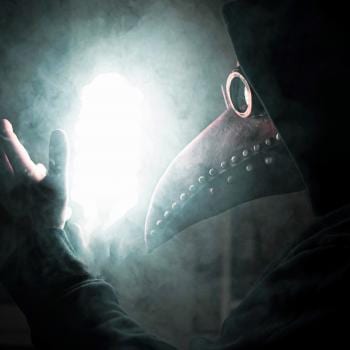Luther didn’t seem to be a big fan of the book of Esther. He’s not alone. Many commentators point out that the book never once mentions God. And, though many modern retellings tend to package Esther as a sanitised 20th/21st Century romance, the Biblical book itself it dark, violent, and the plot pivots on sexual exploitation.
It was a word from Luther, however, that directed me in my attempt to retell this epic in The Girl and The Guardian. In his commentary on the Psalms, Luther wrote, ‘Whoever makes himself beautiful, is made ugly. On the contrary, he who makes himself ugly is made beautiful.’
For me, this became the theme of what I was to write. It directed how I contrasted Vashti with Esther and Haman with Mordecai and it gave thought to why Esther did a three-day, waterless fast before she approached the King. I wrote this way because, thanks to Luther, I’ve come to see beauty as a gospel issue.
Luther never wrote a singular work on the subject of beauty. But his view on the subject is revealed by various comments he made in his works. For Luther, the Cross of Christ was the interpretative lens through which a Christian should understand beauty.
This was a big shift in emphasis for the church. Many of the early church fathers took much of their understanding of the nature of beauty from the Greek philosophers. Thomas Aquinas borrowed heavily from Aristotle in his discussions on form, balance, and proportions. Many of their insights were good. They believed that Beauty, Truth, and Goodness were the three ‘transcendentals’ that God put into Creation. Further, it was understood that, due to sin, these three transcendentals are no longer experienced by humanity as being in harmony with each other. Beauty can be deceptive. Truth can be used in unbeautiful and destructive ways. Apparent goodness can be based on a lie.
Luther didn’t deny these insights. He affirmed them too. But he believed they should not be central for the Christian. That place should be reserved for Christ and him crucified.
Luther believed that the Cross was a wrecking ball to this world’s notion of beauty. He pointed out that the Cross was both beautiful and ugly. The beauty of the Cross is Christ’s and the ugliness is ours. The eternal Son of God had a beauty that outshone Esther’s like the sun outshines a candle. Yet, it is on the Cross that Christ exchanges that beauty for our sinful ugliness. What is more, in taking our ugliness upon himself, Christ becomes even more attractive.
Commenting on Psalm 45, Luther wrote ‘There is the one and only beauty—to believe in the Lord Jesus Christ’. When we put our hope in the beauty that is given to us in Christ, we stop trying so hard to make ourselves more attractive to God and the world around us. In living out our faith, we become increasingly free from the dark and manipulative side of beauty that our sin nature creates. We know where true beauty comes from. It is at the Cross that Beauty is reunited with Truth and Goodness. It is here where we are pronounced as beautiful and where we learn to live in truly beautiful ways.
__________
This was a guest post from Joshua D. Jones. Joshua D. Jones is author of the The Girl and the Guardian, a retelling of the Mordecai and Esther epic. He is originally American but has lived in Europe, where his wife is from, since 1999. He pastors north of London where he lives with his wife and four children. He sometimes blogs at Sanitys-Cove.com













